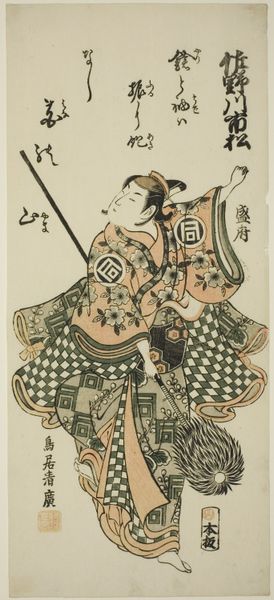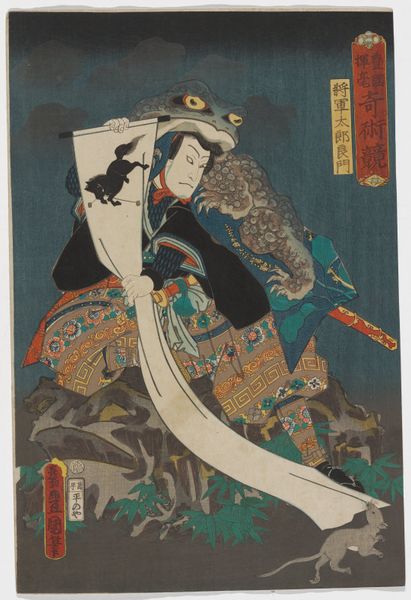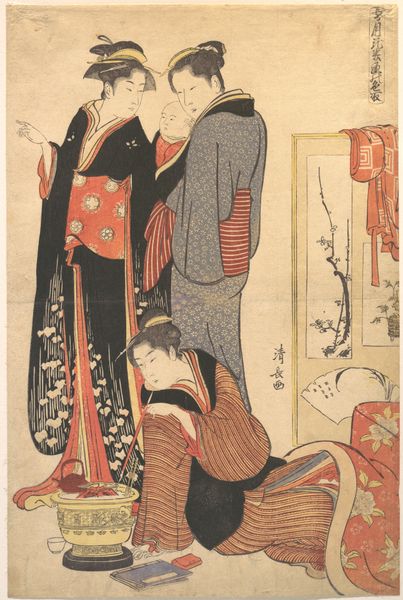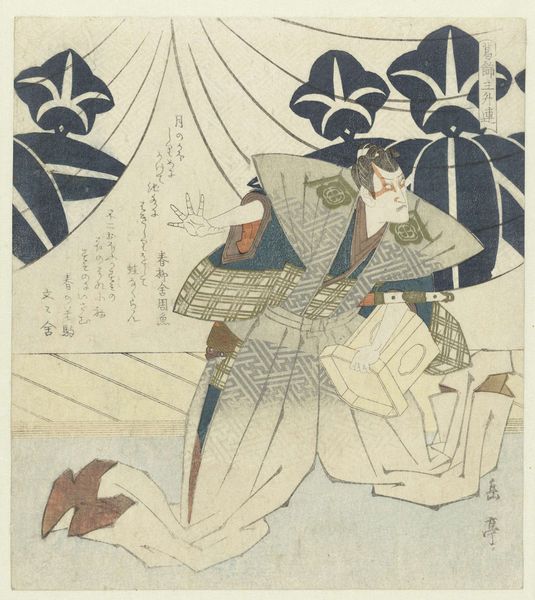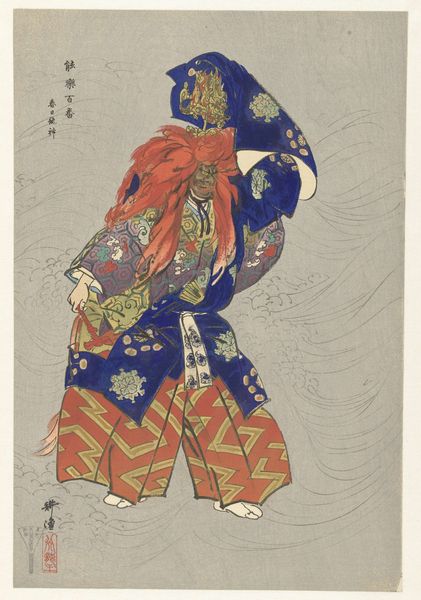
print, woodblock-print
# print
#
asian-art
#
pastel colours
#
figuration
#
woodblock-print
Dimensions: height 370 mm, width 250 mm
Copyright: Rijks Museum: Open Domain
Curator: Well, this image certainly has some vibrancy. Editor: Absolutely. We're looking at "Scene uit het Noh theaterstuk Rashomon" a woodblock print crafted sometime between 1922 and 1926 by Tsukioka Kogyo. It's part of the Rijksmuseum's collection. My first impression is its theatrical tension, like a still from a Kabuki play frozen mid-action. Curator: Precisely, the artist skillfully employs diagonality within the pictorial space. Observe the tilt of the sword, balanced by the posture of the demonic figure looming in the backdrop. Semiotically, the checkerboard pattern in the kimono is quite striking. It serves as a motif that juxtaposes the rigid and unpredictable nature of fate within a traditional, highly structured society. Editor: Yes, and the mask… it gives me the creeps, in the best way possible. The textures in the red hair and its distorted features are not necessarily frightening. They invoke the surreal experience that goes on backstage during preparations. But these pale colours are really grounding this visual depiction of the story in this work. It brings to mind that there's a ghostly aspect of theatre that lives between performances, like in a liminal state of purgatory. Curator: Your point about the ghostly in-betweenness is well taken, but do also attend to the placement and texture of the fabric hung in the background. Note how its vertical expanse emphasizes the constricting, codified realm within which these archetypal figures perform. There is no real nature involved here. It's all performance. Editor: You are so right. There’s something else at play—literally—within these frames of tradition. Kogyo doesn't simply illustrate a scene; they dissect the very essence of Noh, exposing the tensions behind the painted faces and stylized movements, maybe even their own interpretation or modern perspective of that tradition, looking at it from a late, Japonisme-inspired context. Curator: An incisive comment, indeed. So, what could you say is your overall take on this particular print? Editor: It's a beautiful, unsettling piece. It presents the play and dismantles it all at once! Kogyo doesn’t just show the mask; they expose the machinery and emotional experience that make the theatrical face speak to audiences in the dark, as if pulling back a velvet curtain and beckoning viewers to engage more actively. Curator: Agreed. Its artful formalism offers a unique lens through which to perceive not only Noh theater, but the intricate structures underpinning cultural identity.
Comments
No comments
Be the first to comment and join the conversation on the ultimate creative platform.

